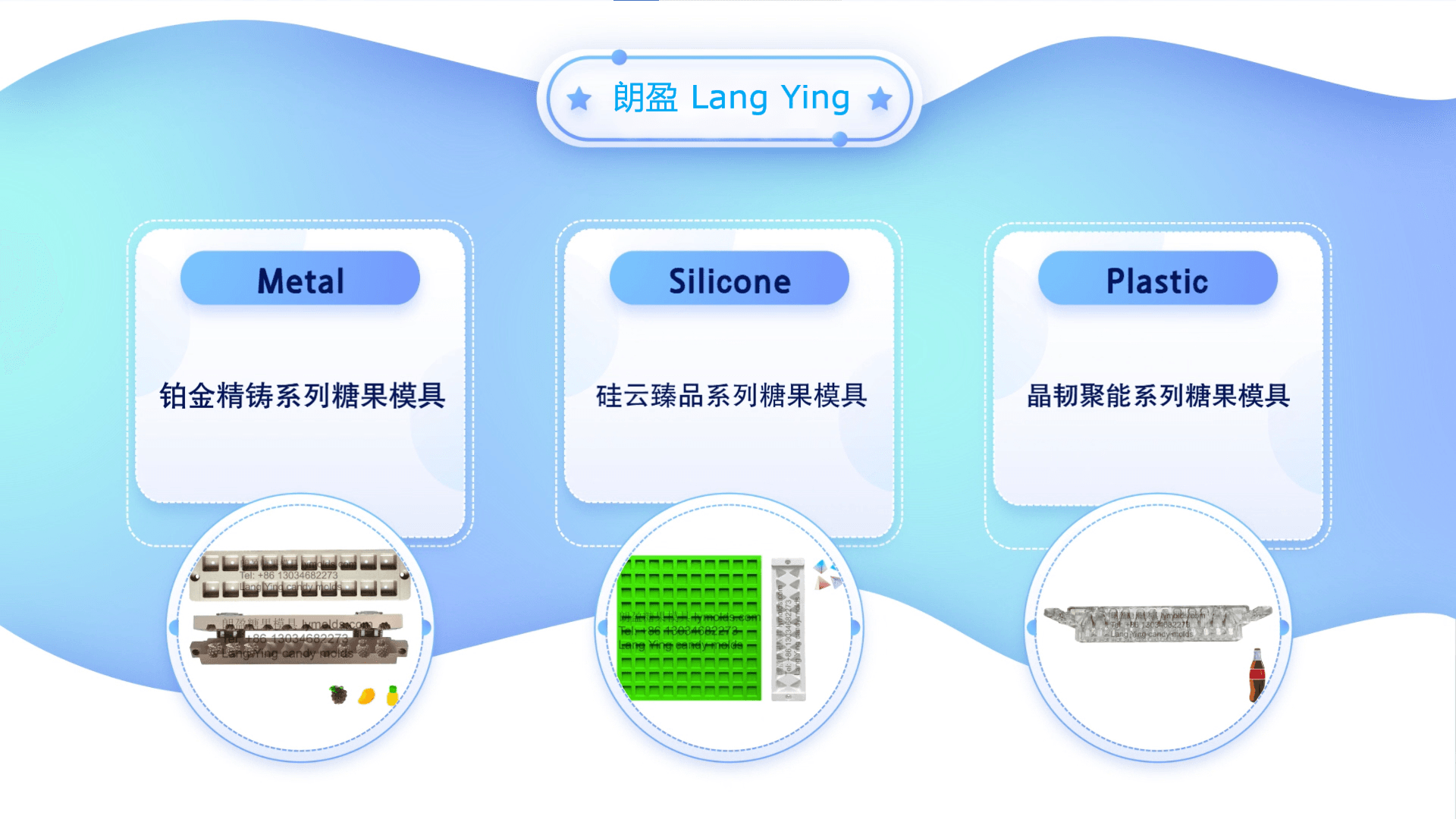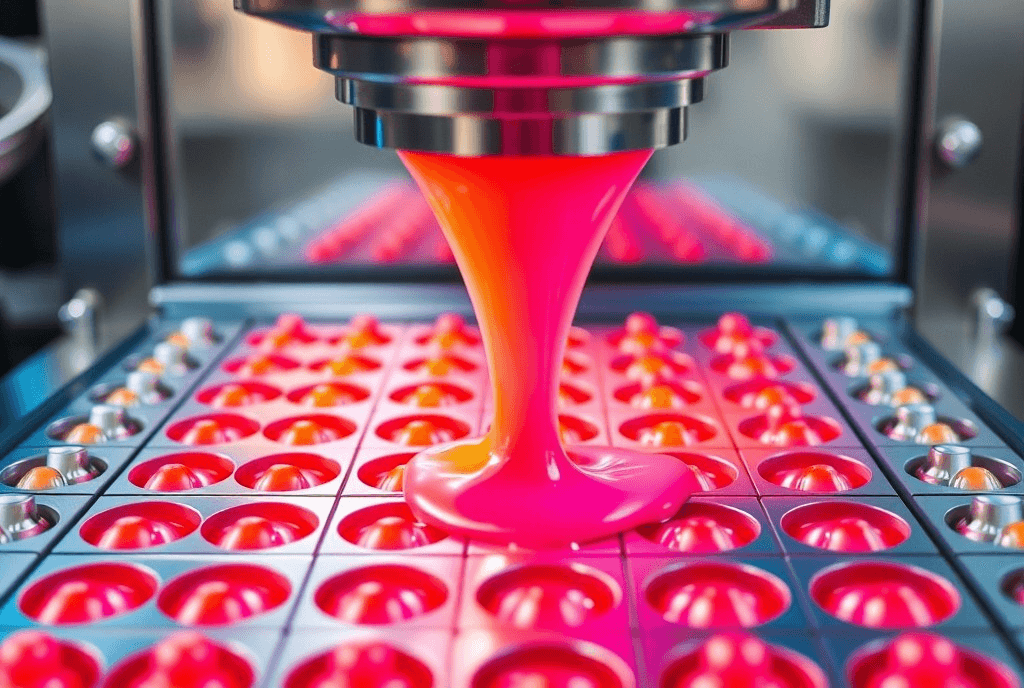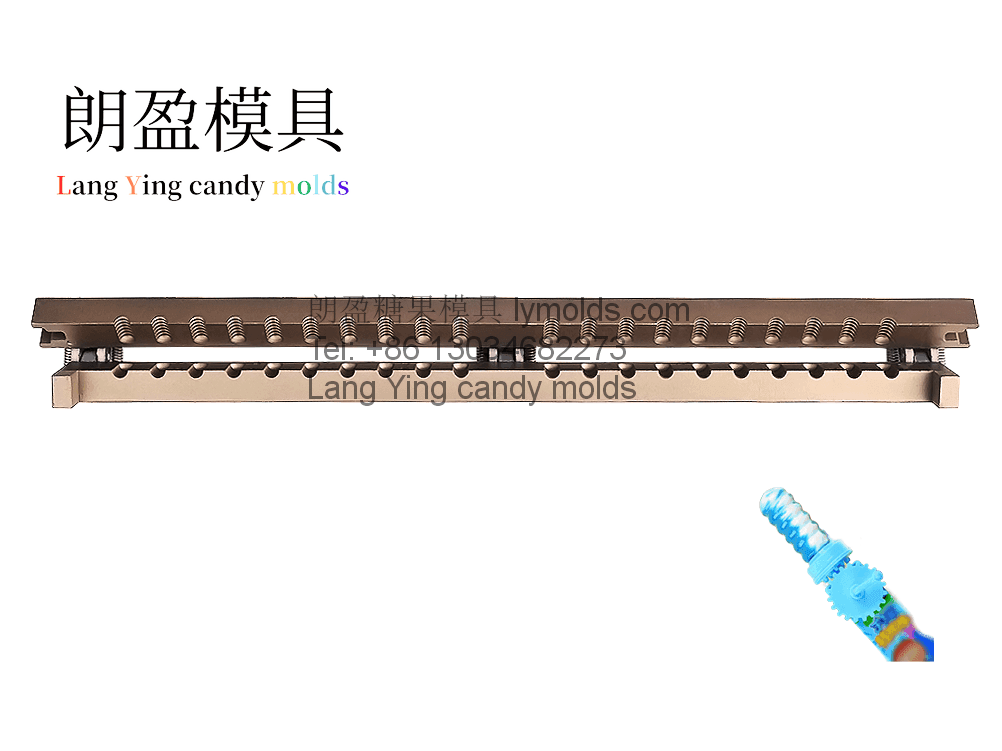In the fiercely competitive world of candy, the flawless presentation of each candy piece is crucial to brand image and customer experience. As a core tool impacting production efficiency, product quality, and long-term costs, mold selection is far from trivial. An exceptional mold consistently shapes exquisite and tempting candies day after day under high-intensity operation, while helping you control costs and maximize profits. Choosing the wrong mold not only means extra expenses from frequent replacements but can also lead to soaring defect rates and reduced production line efficiency.
This article will break down the key dimensions for selecting commercial candy molds, helping you avoid pitfalls and choose a truly reliable production partner:
1. Material Characteristics: The Foundation of Performance
- Plastic Candy Molds:
- Advantages: Lower initial cost, lightweight.
- Disadvantages: Poor thermal conductivity, leading to longer cooling/solidification times and limiting production efficiency. Low hardness, prone to deformation and wear; complex, fine details struggle to remain sharp over time. Relatively short lifespan. Inferior high-temperature stability.
- Silicone Candy Molds:
- Advantages: Offers some demolding convenience for specific shapes. Soft texture.
- Disadvantages: Poor thermal conductivity, a major bottleneck for improving production efficiency. Low strength and durability, prone to tearing or scratching from handling or use. Surface prone to pigment and oil absorption, difficult to clean thoroughly; prone to lingering odors over time. Edge details can blur with repeated use. Generally shorter lifespan.
- Metal Candy Molds:
- Advantages: Excellent thermal conductivity, significantly accelerating candy cooling/solidification and boosting per-hour output. Exceptional hardness and strength, resistant to deformation and wear, ensuring intricate designs remain sharp and clear even after prolonged use. Superior dimensional stability guarantees uniform candy size and shape. Extremely smooth, dense surface minimizes residue, facilitating easy cleaning and sterilization.
- Disadvantages: Higher initial purchase cost.
- Customization Considerations: Notably, modern candy production increasingly demands unique molds. Some experienced precision mold manufacturers (such as Langying Molds) offer personalized custom services covering various materials (including high-performance metals). They tailor solutions to your unique design, production volume, and process requirements, crafting molds that perfectly align with your sweet vision.
2. Durability & Lifespan: The Deciding Factor in Long-Term Costs
- Plastic and silicone molds degrade relatively quickly under the high-pressure, high-temperature, high-frequency demands of commercial environments. The direct costs of frequent replacements and associated downtime losses are significant.
- Metal molds, especially those precision-manufactured from high-grade alloys, offer superior durability. They withstand rigorous continuous production with ease, maintaining precise form year after year, minimizing replacement frequency, and significantly optimizing long-term production cost structures.
3. Production Efficiency: Time is Money
- Thermal conductivity is core. The slow heat transfer of plastic and silicone often bottlenecks production line speed.
- The exceptional thermal conductivity of metal molds is a core advantage. They rapidly absorb heat from candy mixtures or transfer heat to cooling systems, effectively shortening molding cycles and directly boosting line throughput.
4. Demolding Performance & Product Quality: The Silent Ambassador of Your Brand
- Smooth demolding directly affects product appearance, yield rate, and operational flow. Sticking, breakage, or surface imperfections directly harm brand reputation.
- Mold surface smoothness and microstructure are paramount.
- High-quality metal molds achieve consistently superb demolding through precision polishing and advanced surface treatments. Candies emerge with a glossy, smooth finish, vivid details, and sharp, distinct edges, presenting perfect, uniform “premium” quality with every piece.
5. Cleaning, Maintenance & Hygiene: The Foundation of Food Safety
- Commercial molds must be easy to thoroughly clean and sanitize. Any crevices or residue pose risks.
- Metal molds feature dense, non-porous, and exceptionally smooth surfaces with stable chemical properties. Cleaning is highly efficient and convenient; they withstand high-pressure hot water rinsing and common food-grade sanitizers, greatly enhancing sanitation and safety.
Conclusion: Invest in Robust Metal Strength for Your Sweet Venture
By deeply considering the five crucial dimensions – material properties, durability/lifespan, production efficiency, demolding quality, and cleaning/hygiene – it becomes clear:
Metal molds, with their exceptional thermal conductivity, unmatched strength and durability, supremely smooth surface finish, top-tier demolding performance, and outstanding food safety characteristics, perfectly align with the rigorous demands of industrial production. While the initial investment may be higher, their enduring, stable performance, resulting output increases, reduced scrap rates, and optimized long-term costs deliver compelling overall value.
When seeking a reliable partner capable of precisely realizing your brand’s design vision and enduring countless stable cycles, choosing mold suppliers deeply rooted in precision manufacturing is paramount. Look for those especially skilled in utilizing top-grade metal materials and achieving superior surface finishes. Leading suppliers not only offer standardized high-quality metal molds but also provide flexible bespoke solutions like Langying Molds.
Choosing the right mold is the beginning of the path to success. Let it be the solid, dependable pillar of productivity in your sweet venture.





